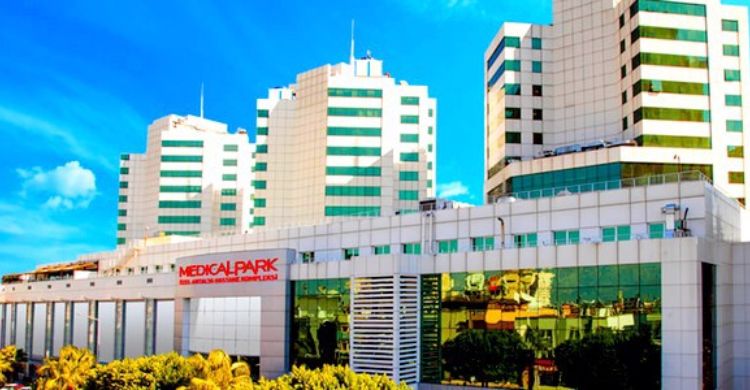General Surgery
Ventriculoperitoneal Shunt procedure
VP SHUNT
Explore advanced ventriculoperitoneal shunt treatment in India for effective care. International patients benefit from skilled specialists and modern facilities.
What is Ventriculoperitoneal Shunt procedure (VP SHUNT)?
Ventriculoperitoneal Shunt is an operation for managing conditions that cause increased levels of fluid in the brain called cerebrospinal fluid. This condition, known as hydrocephalus, causes higher pressure inside the skull so that patients may experience headaches, nausea, vision difficulties, or problematic brain function in the worst-case scenario.
Choosing the Right VP Shunt Types
The choice of VP shunt type depends on several factors:
- A patient’s age, any prior illness or diseases and the current state of health.
- Infection or complications’ rate.
- Activity related factors (for example, activity levels physical need for compatibility with MRI).
- Doctor’s advice following an assessment carrying out.
Need for Ventriculoperitoneal Shunting
A Ventriculoperitoneal Shunt (VP Shunt) is required when there is buildup of CSF in the brain ventricles thus increased intracranial pressure. This condition is primarily called hydrocephalus. It Enable the patient to manage his/her symptoms and avoid conditions that may lead to brain damage by allowing normal flow and pressure of the CSF.
- Congenital Hydrocephalus
- Acquired Hydrocephalus
- Normal Pressure Hydrocephalus
- Obstructive Hydrocephalus
- Communicating Hydrocephalus
- Increased Intracranial Pressure
Symptoms Leading to VP Shunt procedure
Comprehensive list of symptoms requiring the Ventriculoperitoneal Shunt (VP Shunt) is as follows, and is connected with effects of hydrocephalus or increased intracranial pressure due to the presence of excess cerebrospinal fluid in the brain: Symptoms often depend on the patient’s age, the underlying causes of CSF accumulation, and how fast the condition progresses.
In Infants
- Unusually Rapid Head Growth
- Bulging Fontanelle
- Vomiting
- Irritability and Poor Feeding
- Downward Gaze
- Developmental Delays
In Children and Adolescents
- Headache
- Nausea and Vomiting
- Vision Problems
- Balance and Coordination Issues
- Behavioral Changes
- Seizures
- Delayed Growth or Puberty
In Adults
- Difficulty Walking
- Urinary Incontinence
- Cognitive Decline
- Chronic Headaches
- Nausea and Vomiting
- Fatigue and Drowsiness
- Vision Changes
In Older Adults
- Gait Disturbances
- Cognitive Impairments
- Urinary Issues
Ventriculoperitoneal Shunt Risks/VP Shunt Complications
The Ventriculoperitoneal Shunt (VP Shunt) procedure is long and characterized by minimal risk, although, like any surgery, it has some risks. These risks are associated with the procedure of implantation of the shunt as well as the further work of the shunt system. Knowledge of these risk factors plays role in identifying possible complication early enough to prevent.
- Infection
- Bleeding
- Anaesthesia Risks
- Shunt Malfunction
- Over-Drainage
- Under-Drainage
- Peritoneal Irritation
- Bowel Perforation
- Scarring
Facilities and Services Offered to International Patients for Ventriculoperitoneal Shunt procedure
International patients who need the Ventriculoperitoneal (VP) Shunt can avail a spectrum of the specific services aimed at the comprehensive patient’s care and comfortable stay. Such services are specific to address the needs of foreign patients who come to this country for medical treatment.
- Language Support
- Travel and Accommodation Arrangements
- Affordable Pricing
- Multidisciplinary Teams
- Visa Assistance
Ventriculoperitoneal Shunt Procedure Pre-Treatment Process
Pre-Operative Preparation
- Medical Evaluation
- Comprehensive intake history Interview of the patient and his/her family.
- MRI, CT scan to determine the size and state of the ventricles.
- Screening to check the patient’s condition in order to qualify for surgery.
- Patient Education
- The procedure option, the advantages and disadvantages, the possible complications, and what should be expected.
- Risks and benefits associated with postoperative regimen and life style alterations.
- Consent
- Patient’s agreement is sought once the patients have been made to understand the particular procedure and the possible repercussions.
- Fasting
- It is important to tell the patient not to have food or beverages for several hours before the surgery.
Ventriculoperitoneal Shunt Surgery
The surgery may take an average of 1 to 2 hours and requires general anaesthesia.
Incisions:
- One or two holes are made on the scalp above the head and as well as on the skull over the ventricle.
- The second cut is in the abdomen for the distal catheter placement.
Placement of Catheter:
- In ventriculography, a small hole is produced on the skull and a catheter is introduced into one of the ventricles of the brain to suck CSF.
- The other end of the catheter is inserted into the peritoneal cavity through subcutaneous placing of the needle.
Valve Insertion:
- A valve is inserted somewhere along the catheter system, usually behind the ear of in the neck.
- The valve also controls the amount and pressure at which CSF is drained from the body of a patient.
Connection and Securing:
The proximal catheter here is fixed to the valve in the ventricle.
The distal catheter which extends to abdomen is anchored in the peritoneal cavity for CSF sampling.
Closure:
-
Wounds are then sutured or stapled, and cleaned, dressed with sterile materials.
Ventriculoperitoneal Recovery
Postoperative Care
Hospital Stay:
- Patients are usually allowed to be taken home after 1–3 days of observation in the hospital.
- Patient’s temperature, pulse, respiration, blood pressure and neurological assessment and the dressings of operations incisions are observed.
Imaging:
- A CT or X-ray could be taken postoperatively to check the placement of the shunt.
Pain Management:
- Both prescription drugs for pain control and antibiotics are administered in an attempt to alleviate pain and guard against infection.
Physical Activity:
- Patients are told that they should lie down in the first place and then gradually start doing their normal activities.
- The patient should however minimize of any form of physical activity that may strain the body until the surgeon gives clearance.
Follow-up Care
- Monitoring Shunt Function:
- Follow-ups in order to ascertain that the shunt is functional properly.
- But if there is a need for adjustments of the shunt’s valve, it may also be done.
- Signs of Complications: Patients are educated to watch for symptoms such as:
- Severe headache
- Nausea and vomiting
- Any sort of inflammation or reddening along the shunt path
- Fever or abdominal pain
- Long-Term Care:
- The shunts may be revised because of blockages, infection, or with changes in the clinical condition of the child.
Success Rate of Ventriculoperitoneal Shunt Procedure
- The treatment VP shunt procedure over GSL hydrocephalus symptoms gives a success rate 70-90% in majority of cases.
- For some particular diseases like normal pressure hydrocephalus (NPH), 50-80% of respondents are reported to be rather improved concerning gait, cognition, and bladder control.
Best Hospitals for Ventriculoperitoneal Shunt Procedure
- Artemis Hospital, Gurgaon
- Medanta-The Medicity, Gurgaon
- Fortis Memorial Research Institute, Gurgaon
- Max Hospital, Saket
- BLK-Max Super Speciality Hospital, New Delhi
Best Doctors for Ventriculoperitoneal Shunt Procedure
- Dr. Aditya Gupta
- Dr. Karanjit Singh Narang
- Dr. Rana Patir
- Dr. (Col) Joy Dev Mukherji
- Dr. Atul Prasad
Why Choose GetWellGo for Ventriculoperitoneal Shunt Procedure?
GetWellGo is a top-rated healthcare service provider agency that offers holistic patient-centered health care services. Here are the reasons why GetWellGo stands out as an excellent choice for undergoing a VP Shunt procedure:
- Highly Skilled Neurosurgeons
- Advanced Diagnostic Tools
- Cutting-edge Technology
- Travel Arrangements
- Visa Documentation
- Accommodation Bookings
- Multilingual Staff
- Transparent Pricing
TREATMENT-RELATED QUESTIONS
GetWellGo will provide you end-to-end guidance and assistance and that will include finding relevant and the best doctors for you in India.
A relationship manager from GetWellGo will be assigned to you who will prepare your case, share with multiple doctors and hospitals and get back to you with a treatment plan, cost of treatment and other useful information. The relationship manager will take care of all details related to your visit and successful return & recovery.
Yes, if you wish GetWellGo can assist you in getting your appointments fixed with multiple doctors and hospitals, which will assist you in getting the second opinion and will help you in cost comparison as well.
Yes, our professional medical team will help you in getting the estimated cost for the treatment. The cost as you may be aware depends on the medical condition, the choice of treatment, the type of room opted for etc. All your medical history and essential treatment details would be analyzed by the team of experts in the hospitals. They will also provide you with the various types of rooms/accommodation packages available and you have to make the selection. Charges are likely to vary by the type of room you take.
You have to check with your health insurance provider for the details.
The price that you get from GetWellGo is directly from the hospital, it is also discounted and lowest possible in most cases. We help you in getting the best price possible.
No, we don't charge patients for any service or convenience fee. All healthcare services GetWellGo provide are free of cost.
Top Doctors for General Surgery
Top Hospitals for General Surgery
Contact Us Now!
Fill the form below to get in touch with our experts.





.png)

